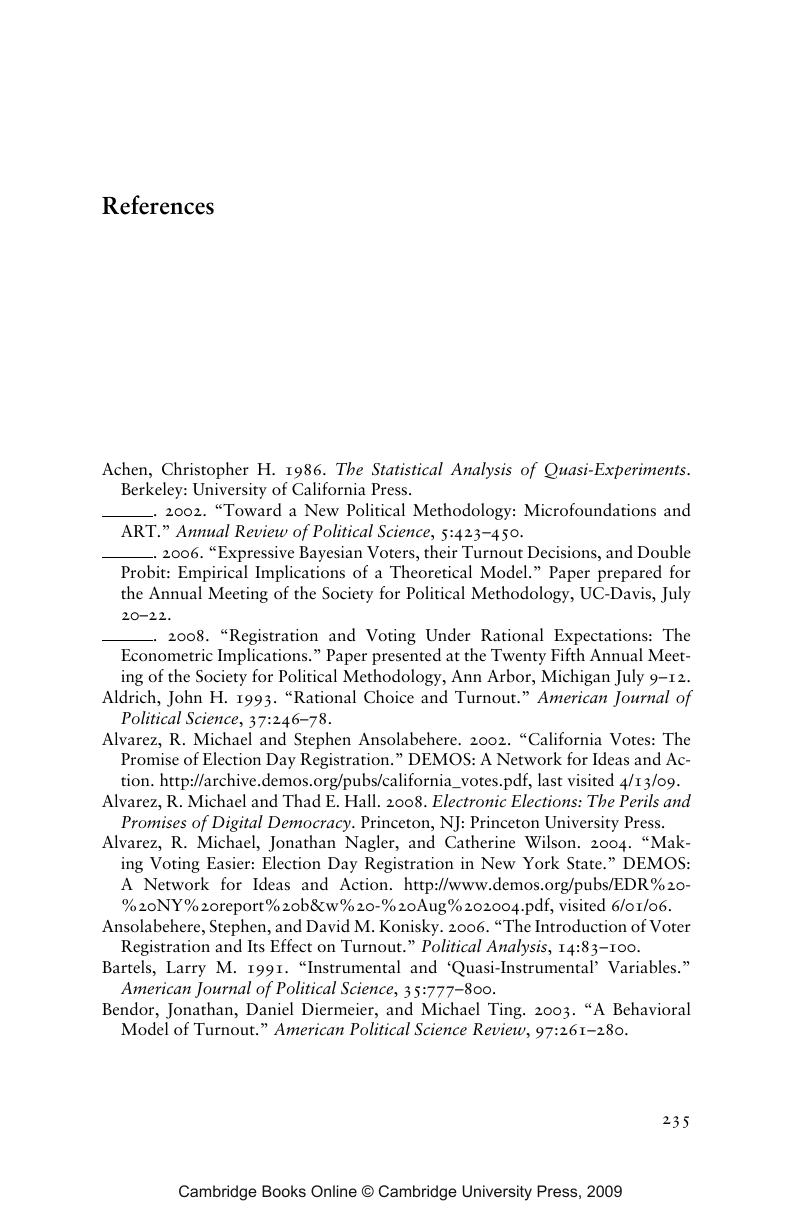Book contents
- Frontmatter
- Contents
- Acknowledgments
- Introduction
- 1 Motivation and a New Theoretical Framework
- 2 The Purposeful Adoption of Election Day Registration
- 3 Election Day Registration by Choice and by Federal Mandate
- 4 Motor Voter by Choice and by Federal Mandate
- 5 Registration and Voting in the Post-NVRA Era
- 6 Election Reform and the Composition of the Electorate
- 7 EDR on the Ground and Prospects for the Future
- APPENDICES
- References
- Index
- References
References
Published online by Cambridge University Press: 02 December 2009
- Frontmatter
- Contents
- Acknowledgments
- Introduction
- 1 Motivation and a New Theoretical Framework
- 2 The Purposeful Adoption of Election Day Registration
- 3 Election Day Registration by Choice and by Federal Mandate
- 4 Motor Voter by Choice and by Federal Mandate
- 5 Registration and Voting in the Post-NVRA Era
- 6 Election Reform and the Composition of the Electorate
- 7 EDR on the Ground and Prospects for the Future
- APPENDICES
- References
- Index
- References
Summary

- Type
- Chapter
- Information
- Discount VotingVoter Registration Reforms and their Effects, pp. 235 - 246Publisher: Cambridge University PressPrint publication year: 2009
References
- 2
- Cited by



